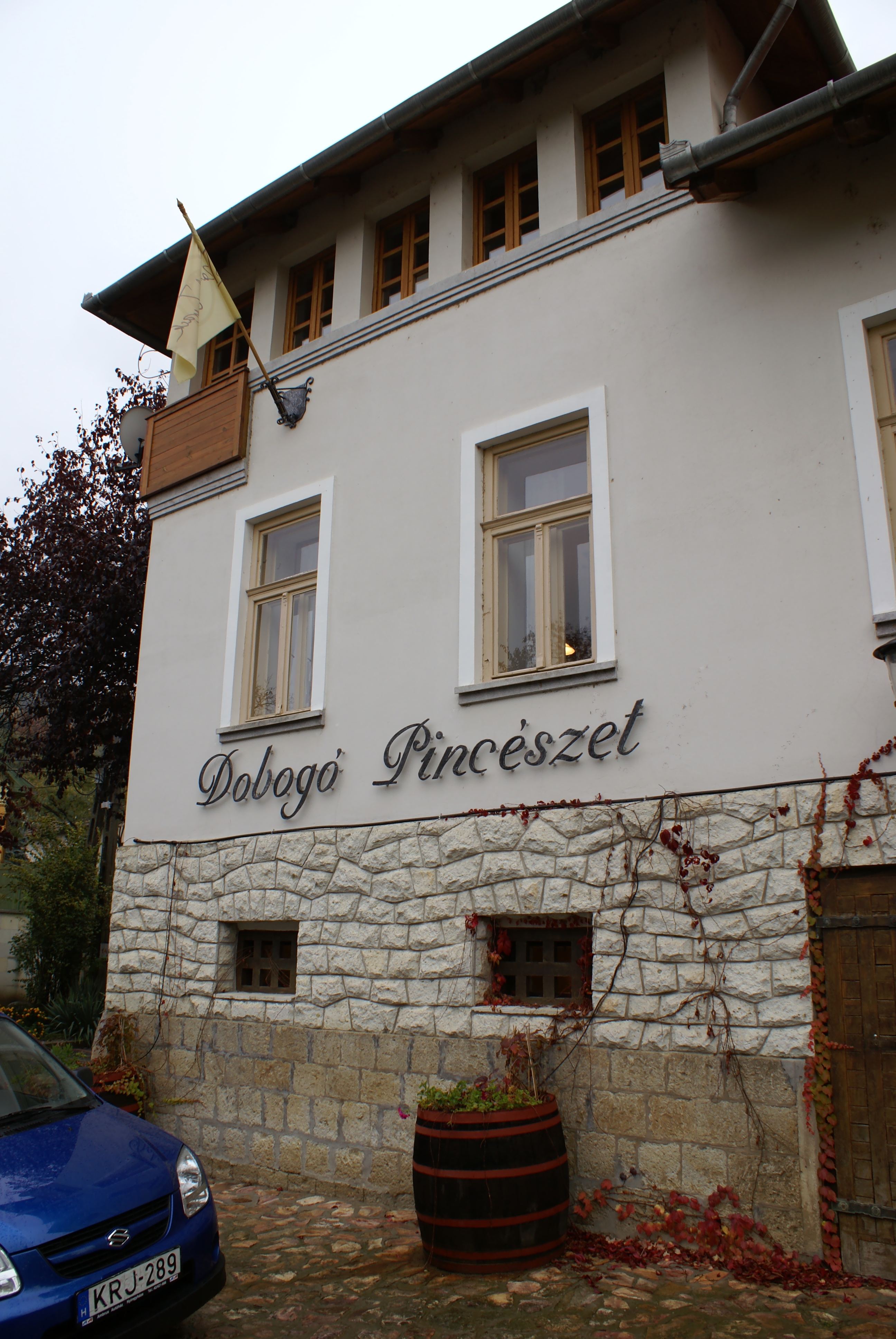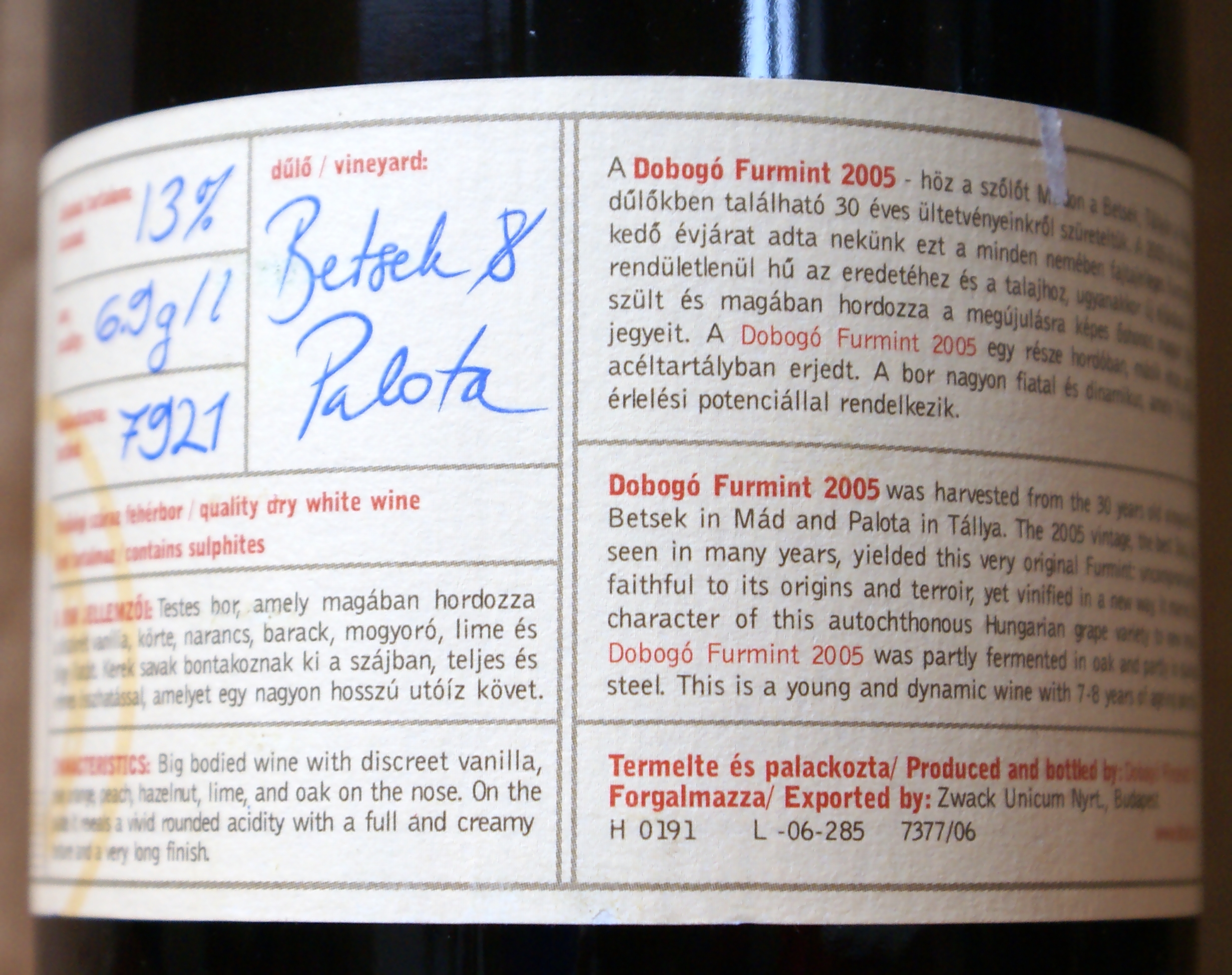Dobogó Furmint vertical
Posted on 10 February 2011
Emotion is important. I believe emotional engagement is vital to good criticism. Many wine writers are obsessed with objectivity – that will allegedly make them seem more authoritative to readers. I think the exact opposite is true. Who is interested in a statistical assessment of Château Lafite? The important thing is whether it turns you on. If it does speak to a critic whose taste is in tune with yours, I guess you’ll think it worth giving a go.
I am emotional about Tokaj. This Hungarian region’s sweet and dry whites are probably my favourites of all wines. And as everywhere else, I have my private heroes here: estates that I have consistently liked over many years, and who I firmly believe make excellent wines: vibrant, engaging, full of content, and reflecting why Tokaj is such a special place. I’ll probably be a little biased in favour of these estates, ready to forgive them an underwhelming vintage here and a missed experiment there. Hopefully, this also makes me more sensitive to subtleties of what they do well.
On the occasion of the major Furmint tasting in Budapest being organised today (which unfortunately I can’t attend) I decided to look at one of my very favourite Furmints from Tokaj: Dobogó. This wine was first introduced when winemaker Attila Domokos (trained in Italy) arrived at Dobogó in 2003. I remember the two first vintages, 2003 and 2004, being very impressive and immediately establishing this bottling as one of the region’s classic. Here I look at the four subsequent vintages: 2005, 2006, 2007 and 2008.
The 2005 is at peak now. It is a rich, brooding wine that develops an earthy, mushroomy, slightly damp-cellary note not unlike an aged Riesling (Germans would call this note Firne). The mouthfeel is creamy with a honeyed, caramelly flavour, the finish is toasted, but there is also good complexity with notes of green plum, tangerine and minerality. It holds well in the opened bottle, suggesting some further keeping potential, though I don’t think it will improve anymore.
The 2006 is the definite star of my initial tasting upon opening the bottles. It has quite more freshness and sappy acidity than the 2005, and is showing quite younger too. There is good reductive minerality too and on the whole the balance is excellent. Oak is still quite present here; and with all the minerality, there is a sense of richness and opulence that is poles apart from Furmint’s frequent greenness and tartness (it’s a late-ripening acidic grape, which is why it has historically been used for sweet wine). Here, there is not a shadow of tartness, and the overall impression is of a broad, almost Mediterranean wine – Marsanne or even Viognier came to mind. This impression is consistent with what I felt in the 2003 and 2004 vintage.
The 2007 is different. It shows how difficult it is to handle higher alcohol in a white wine. The flavour profile is very similar to the 2006 Furmint, but where the latter has 13.54%, this clocks in at 14.16%, and that really shows: the finish is hotter, the freshness is much diminished, there is also a petrolly, rubbery note developing over time. (Interestingly the residual sugar and acidity are almost the same: 2.4 r.s. 5.9 acids and 2.9 5.7 respectively, giving an even more precise insight into the sensory effect of alcohol). So while this overall is a successful wine, it doesn’t do well in a comparative tasting, lacking the freshness and élan of the 2006 or 2008. But under the Viognier-like peachy richness, there is a stronger expression of stoney terroir here.
The 2008 is the current release. (5800 bottles; 533 bottles of a single-vineyard Betsek were also made in this vintage). A blend of fruit from the Szt. Tamás and Betsek vineyards (both have a heroically heavy volcanic clay soil), it is still showing young with minor oak evident on nose and palate, but is mostly dominated by that familiar peachy, apricotty Viognier-like fruit. But the flavour is deep and complex and there is a cooling effect of terroir – especially with time in the glass and on day 2, when the 2006 clearly get a little tired while this 2008 definitely improves.
Overall, it is striking how consistent Dobogó’s Furmint is showing across very different vintages: the temperate wet-autumn 2005 and the torrid dry 2007. There are minor differences between these four bottles but the style remains the same: that distinctive peachy, apricotty, fleshy silky touch of absolute fruit ripeness. Dobogó are some of the last wineries to harvest grapes for their dry wines, well into November, so that with no malolactic fermentation, the wine is always in balance and never shows the typical searing limey acidity of underripe Furmint.
Actually I did miss a bit of lime in these wines. My personal preference would perhaps be for a sharper, more poised and Riesling-like rendition of Furmint, such as Zoltán Demeter’s 2008s or the supremely elegant Furmints of Kikelet (these are just two examples). However it would be nonsensical to criticise Dobogó for their style. Attila Domokos is showing that with proper work in the vineyard and cellar, Furmint can rival any white wine for richness, structure and sensual appeal. And from the 2007 vintage, it is clear that there is an added mineral dimension with less oak influence and better overall freshness. This is really one of Hungary’s most exciting labels today.
Disclosure:
Source of wine: 2005 – 2007 – 2008, own purchases; 2006 – sample provided by the winery for the benefit of this vertical tasting.





